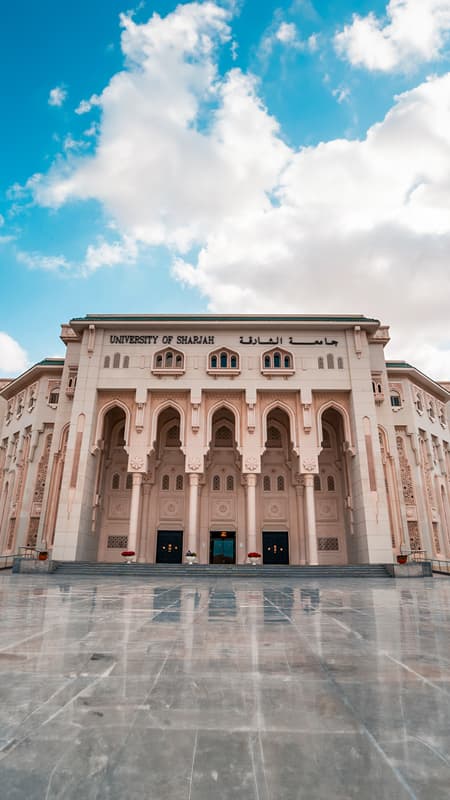Sultan Al Qasimi Inaugurates the 40-Meters Radio Interferometer
His Highness Sheikh Dr. Sultan bin Mohammed Al Qasimi, Member of the Supreme Council, Ruler of Sharjah, and President of the University of Sharjah, inaugurated the 40-Meters Radio Interferometer at the Sharjah Academy for Astronomy, Space Sciences and Technology (SAASST). The project to build a 40-meter Radio Interferometer scale using three telescopes of the same type working to collect the faint outgoing radio waves of objects in space and measure them to add to the scientific knowledge in space sciences and astronomy, and enhance the experience and the role of students and researchers in the study of this field.
His Highness listened to an explanation of the project that includes a radio interferometer of 40-meters, which is the first of its kind worldwide in terms of the small size of its dishes and the relatively low cost, and His Highness pressed the launch button to mark the beginning of the operation of the station.
The Sharjah Academy for Astronomy, Space Sciences and Technology (SAASST) started with installing a one-single Spider-500A 5-meter radio telescope by PrimaLuceLab of Italy in April 2019. The Radio Telescope operates at a frequency of 1.4 GHz. The three Spider-500A compose the base interferometer at the top of a rectangular scalene triangle, with distances (sides of a scalene triangle) of 30, 40, and 50 meters. These specific locations simulate the resolution of a 40-m diameter single-dish antenna, with a collecting area equal to an antenna of 8.7 meters in diameter. The synthesized beam in this configuration will measure about 0.36° (21.6 arc minutes).
His Excellency Prof. Hamid M.K. Al Naimiy, Chancellor of the University of Sharjah, stated that this project comes thanks to the vision and support of His Highness Sheikh Dr. Sultan bin Muhammad Al Qasimi, Member of the Supreme Council, Ruler of Sharjah and President of the University of Sharjah, who founded the Sharjah Academy for Astronomy, Space Sciences and Technology as a national development project and scientific research and cultural headquarters seeking to serve and educate society in all areas of space sciences and to be a world leader in space science research. It also aims at the establishment of the United Arab Emirates as a scientific center in the Arab Gulf region and the world.
His Excellency also stated that various research laboratories have been established such as the CubeSat laboratory, radio astronomy laboratory, the meteorite center, space weather laboratory, Sharjah Optical Observatory, and the high-energy astrophysical laboratory. The Academy has also become unique in space research in the Arab Gulf region, and during the past two years has published more than 30 research papers and articles in prestigious international journals The Academy is looking forward to more of these achievements using the new Radio Interferometer.
The Chancellor explained that, in general, the Radio Interferometer station is used to study the Universe and its content from various celestial bodies, especially cold ones, by receiving long radio waves. Radio observatories have many scientific and technological including its ease of use due to the relatively small size of its dishes and its low cost in comparison with other stations. Through radio interference technology, we can also monitor celestial bodies around the clock, not like visual observations limited to night hours only and in clear environments far from light pollution. We can use the frequency (1.4) GHz in the radio observatory to monitor hydrogen as an essential gas in the Universe.
The opening was attended by members of the Board of Trustees of the University of Sharjah, His Excellency Mohammed Obaid Al Zaabi, Head of Protocol and Hospitality Department, and a number of scientific and academic personalities.



